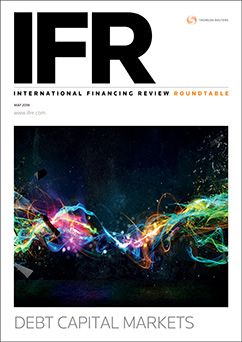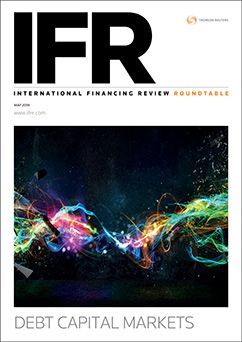The 2018 Thomson Reuters IFR Debt Capital Markets Roundtable – held in London on April 11 – took place at a very thought-provoking time. Equity and bond markets had been volatile; the US had clearly moved into tightening mode and there was talk of potentially accelerated Fed moves; while the how, when and how much of ECB tapering had been keeping market participants transfixed and the markets anxious.
Credit spreads had moved wider and the market tone had shifted. It’s no longer a seller’s market. As institutional buyers push back on top-of-the-market pricing and deal structures and demand a greater say in outcomes, it’s quickly morphed into a buyer’s market. The deal-making environment is hardly treacherous but it is certainly more challenging than it was at the back-end of 2017.
Global DCM activity for the first quarter of 2018 was down 9% year-on-year, the slowest Q1 since 2014. US investment-grade corporate debt volumes, meanwhile, fell to a five-year low and were down 22% as US tax reform, capital repatriation and the discussion around the tax deductibility of interest also had an impact on funding requirements. Global high-yield debt issuance fell by almost a third. Coming off a record 2017, though, the numbers shouldn’t be taken as a sign of real stress or weakness.
Institutional demand continues intact and there have been some bond-market highs, driven by M&A. CVS Health’s US$40bn nine-tranche bond, part of the financing package for its takeover of Aetna, attracted orders of almost US$115bn and redefined the art of the possible in debt capital markets. And while not of similar magnitude, Sanofi’s €8bn six-tranche trade to refinance its takeovers of Bioverativ and Ablynx was an important boost for European DCM.
IFR’s stellar panel agreed on some key points: first and foremost, 2018 is not 2017. This year will be punctuated by bouts of volatility in every asset class and the ability to get deals done will depend on sentiment, which will shift day-to-day.
Borrowers, which had been showing signs of reticence to come to market with spreads backing up, will need time to adjust to the volatile spread environment.
The days of putting almost any deal on the screen and automatically seeing good execution are over, for now. Syndicate managers are going to have work harder to get a handle on investor flow and market sentiment, figure out required new-issue premiums and get timing and allocations right. As the readjustment process takes place, there is a risk that some trades will go out either too cheap or too expensive.
Deals in high-beta markets – high-yield, subordinated financials, smaller tranches, emerging markets, unrated issuers – will require more marketing in the form of roadshows and/or wall-crossings. We’re moving to a world of idiosyncratic risk where sound execution can be name-specific. Capital markets bankers will need to be savvy enough to understand this and match credits to investor appetite.
Taken in the round, though, there was an overriding feeling on IFR’s panel that today’s market conditions are in fact reverting to what used to be normal, versus the rather abnormal conditions of the past few years distorted by central bank buying and unorthodox monetary policy.
To see the digital version of this roundtable, please click here
To purchase printed copies or a PDF of this report, please email gloria.balbastro@tr.com


